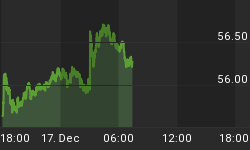Recent gold action has proved exasperating to precious metals bulls, as a multi-week, sideways chop has grated patience and finally given way to a break lower. I now see comments on various blogs regarding the end of the gold bull or at least for the bull to take an extended breather. These attitudes are prevalent around major turning points, but beyond sentiment, many technical factors suggest a significant low is imminent. This post will make the case that just such a turning point is upon us.
Much can be gleaned from gold's weekly chart, so I will use multiple versions in order to concentrate on each point. Regarding the call for an extended breather in gold's bull, I would argue that we've already had such a pause.

Over the course of the gold bull, these extended consolidation periods have been a modus operandi of post-parabolic runs. Gold will typically test the high about 12 months after the peak, followed by a larger breakout a few months later. Eight months into the consolidation period, the time is ripe for gold to begin its run at a test of the peak.
We of course have a more precise timing tool for trading the gold market: cycles. Gold tends to conform to a weekly (intermediate) cycle of 18-24 weeks, meaning approximately every 4-5 months, gold will bounce out of an important low. The current count for gold's intermediate cycle stands at 19 weeks, so price is directly within the timing band for an important low.

Another important characteristic of gold's weekly behavior comes from the 80-week moving average. Every intermediate decline during gold's bull market, with the sole exception of the 2008 liquidation, has been supported by the 80WMA. As you can see in the chart above, price is sitting right on top of this important moving average, telling us that buying pressure is likely to greet any further decline.
The timing of the intermediate cycle low can be narrowed further by studying the daily cycle. As with the intermediate cycle, the daily cycle has a timing band for measuring the distance between lows. For gold, this timing band tends to run 18-28 days, but can sometimes extend into a 30-count.

As with the 80WMA, gold is often greeted with strong buying pressure when a daily cycle extends beyond its normal length. The congruence of the 80WMA and an extended daily cycle should result in a powerful bounce once the turn arrives.
Intermediate cycles also typically bottom with a selling event that blows out stops and puts traders on the wrong side of the market. As you can see in the chart above, the most recent daily cycle took the form of a triangle consolidation. The bearish resolution of the triangle will have many technicians taking shorts. Furthermore, gold violated both the 4-Apr low and the psychologically-important $1600 mark, no doubt triggering stop losses. This selling climax will prime gold for a rally.
A final note on gold's weekly action:

As my friend, Gary, over at SMT often points out, the initial break out of a coil pattern is usually a false break and is followed by a more powerful move in the opposite direction. If his thesis is valid for the current case, we have yet another reason to be suspicious of the triangle breakdown.
Let's also revisit sentiment for a moment:

The sentiment indicators published by Sentimentrader.com are certainly more scientific than the subjective views of blog participants, but we can see that the scientific view backs up the subjective one. Hulbert gold sentiment sits at a dismally low level. Furthermore, we can see a second test of that low level. Another friend, Tiho, over at The Short Side of Long taught me that when a oscillating indicators such as sentiment perform a quick bottom test, the signal is usually much more powerful... yet another reason to be suspicious of the calls for an extended correction in precious metals.
Finally, the prospects for a fervent rally in the precious metals sector would gain a tailwind if the dollar were to undertak a major leg lower. Once again, we can turn to cycle analysis, which suggests that just such a downturn is in progress.

A failed daily cycle is a hallmark of a weekly cycle in decline. In other words, once a daily cycle fails, the general trend should be lower until the price series enters the timing band for a weekly low. For the dollar, the intermediate timing band starts at Week 15 and lasts for 2 months. The DX is currently 10 weeks into its intermediate cycle and should therefore be trending lower for the next 1-3 months. Despite a quick thrust higher over the past week, the dollar's rally is likely to fizzle quickly and give way to precious metals rallies.
More details on cycle setups are discussed in the Member Letter.















